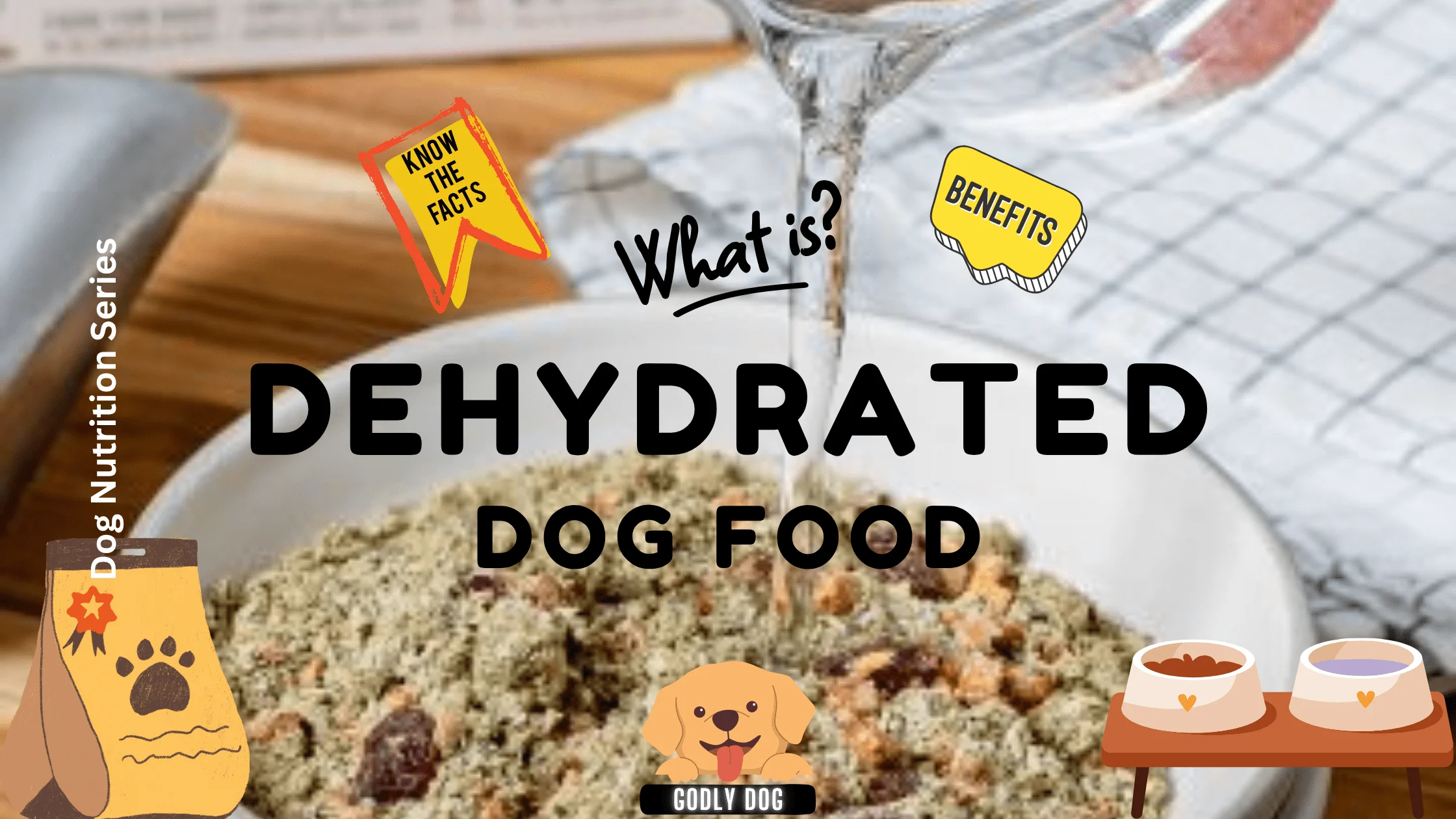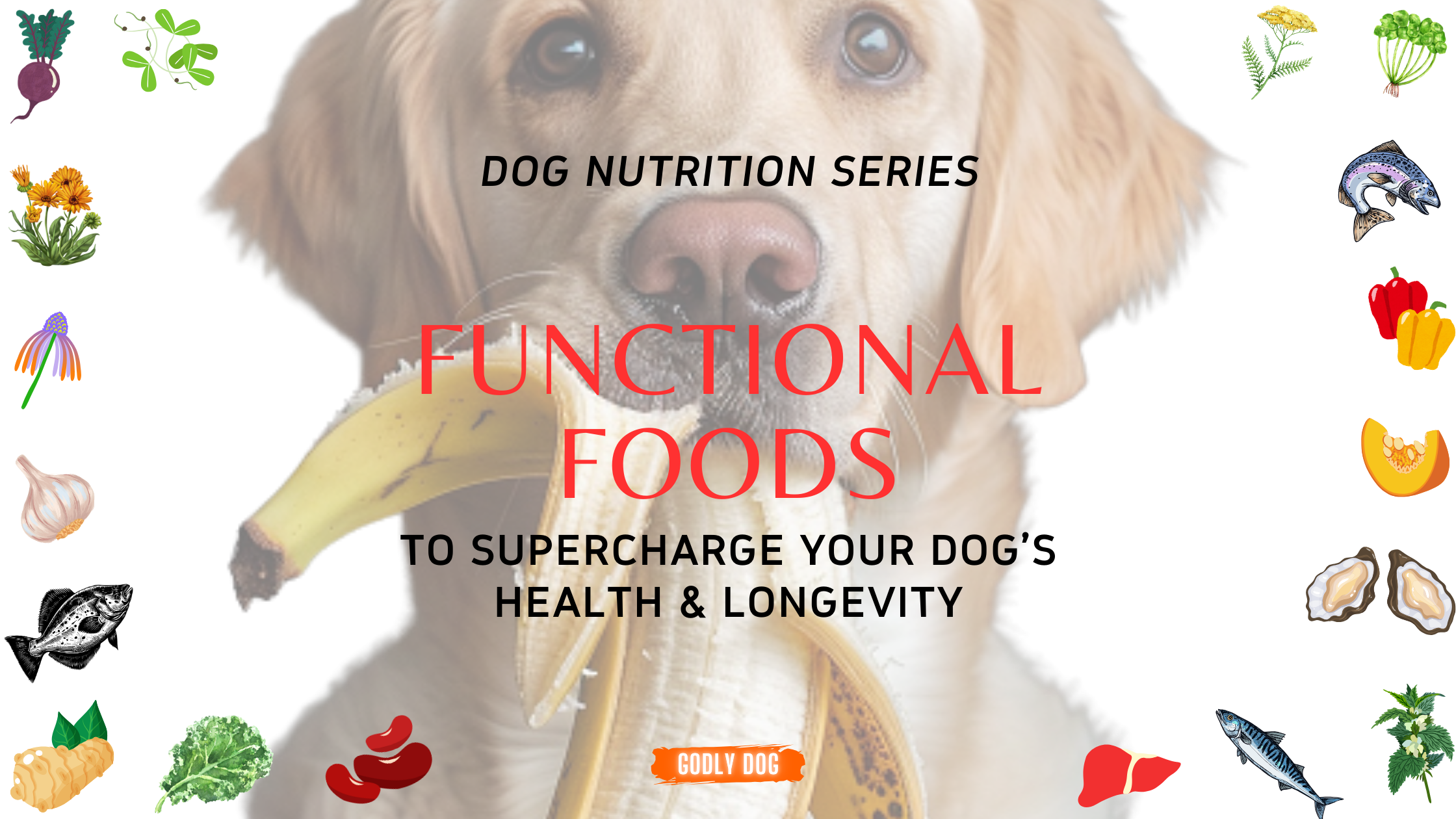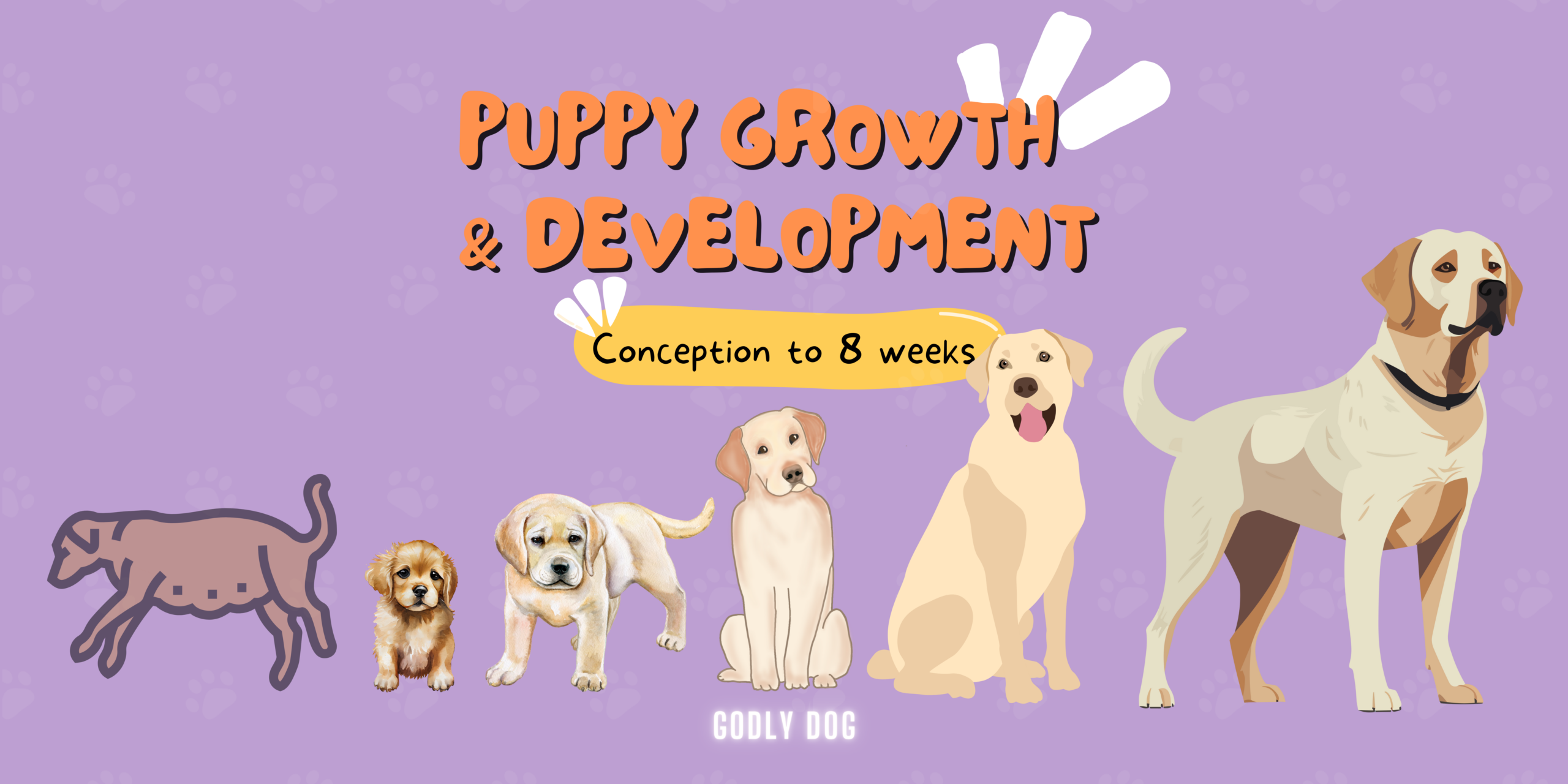What Is Dehydrated Dog Food? A Healthy Kibble Alternative?

Imagine your dog’s food, minus the water, but keeping all the good stuff—nutrients, flavor, and the nose-pleasing aroma (well, nose-pleasing to your dog). That’s essentially what dehydrated dog food is.
It’s made by gently removing moisture from raw or cooked ingredients using low heat over time. This slow dehydration process helps preserve nutrients while making the food shelf-stable without the need for artificial preservatives.
Unlike heavily processed kibble, dehydrated dog food is closer to whole food—fruits, veggies, meats, and grains that you can actually recognize once you add water. It’s not raw, it’s not cooked in the traditional sense—it’s… well, dried. But not in a “sad salad” way. In a “your dog’s dinner just got smarter” way.
Dehydrated food is lightweight, compact, and has a long shelf life. All it needs is a little warm water and a few minutes to transform back into something that closely resembles fresh food. Think of it as backpacking food for your dog—but gourmet.
It’s become popular among dog parents who want better nutrition than kibble but aren’t quite ready to go full raw. So if you too are looking for convenience and quality, dehydrated might just hit the sweet spot.
How Does Dehydrated Dog Food Work?
Dehydrated dog food works a bit like magic—if that magic involved science and a really long drying process.
Here’s the breakdown: fresh ingredients like meat, vegetables, fruits, and grains are gently dried at low temperatures. This process removes moisture (typically 90–95% of it) while keeping the nutritional integrity of the food intact. The goal? Preserve the good stuff—vitamins, minerals, enzymes—without needing chemical preservatives or high-heat processing.
Once dehydrated, the food becomes lightweight, compact, and shelf-stable. But unlike kibble, which is baked and extruded into crunchy uniform shapes, dehydrated food is often closer to its original form. That means when you rehydrate it with warm water, it bounces back—almost like fresh food again. Not quite “farm to bowl,” but closer than most dry food gets.
Here’s how it typically works on your end:
🔸 Scoop the dry food (usually looks like flakes or crumbles)
🔸 Add warm water (or broth)
🔸 Wait 3–5 minutes (cue impatient dog stares)
🔸 Stir and serve That’s it.
The result is a soft, moist, warm meal with boosted aroma and digestibility. Perfect for picky eaters, dogs with dental issues, or anyone who turns their nose up at plain kibble.
So, dehydrated dog food works by taking water out for shelf life and putting it back in when you’re ready to feed. Smart, right?
Dehydrated vs Raw vs Kibble: What’s the Difference?
Raw Food
Raw diets use uncooked, unprocessed ingredients—think raw meat, bones, organs, and veggies. It’s the closest to what dogs might eat in the wild, and advocates love it for its high bioavailability and unprocessed nutrients.
Pros: Nutrient-rich, unprocessed, supports shiny coats and strong muscles.
Cons: Requires freezer space, safe handling, and careful balancing. Plus the risk of bacterial contamination.
Kibble
Kibble is the classic dry dog food: shelf-stable, mass-produced, and convenient. It’s made by cooking ingredients at high temperatures and shaping them into uniform pellets.
Pros: Convenient, affordable, easy to store and feed.
Cons: Often heavily processed, with lower moisture and nutrient degradation from high heat. May contain fillers and artificial additives.
Dehydrated Food
Now enter dehydrated dog food—the middle ground. It’s made with real ingredients like raw or lightly cooked meat, veggies, and grains, but then slow-dried to remove moisture without killing the nutrients.
Pros: Nutrient-dense, easy to store, lightweight, and closer to fresh food when rehydrated.
Cons: Costs more than kibble and needs a few minutes of prep (aka add water and wait).
The Verdict?
- 🔸 Want zero prep and low cost? Kibble.
- 🔸 Want raw benefits without raw handling? Dehydrated.
- 🔸 Want full control and don’t mind the mess? Raw.
It’s all about what works for your dog and your daily routine. No shame in the feeding game.
Is Dehydrated Dog Food Safe and Healthy for Dogs?
Short answer? Yes—when made properly and served correctly, dehydrated dog food is both safe and healthy.
Let’s start with safety. Because the food is gently dried at low temperatures, most bacteria (like salmonella or E. coli) are eliminated during the dehydration process. It’s not 100% sterile like kibble baked at high heat, but it’s much safer than raw food in terms of bacterial load—and doesn’t require you to clean your kitchen like a crime scene after every meal.
Now for the health part.
Dehydrated dog food keeps a lot of its original nutrients because it avoids the intense cooking temperatures used in kibble. That means your dog’s getting more naturally occurring vitamins, minerals, and amino acids—without needing them “added back in” synthetically.
It’s also:
- 🔸 Easier to digest than kibble
- 🔸 Gentler on sensitive stomachs
- 🔸 Lower in fillers, by-products, and artificial stuff
- 🔸 Hydration-friendly (once you add water)
Of course, not every dehydrated food is created equal. You still want to check the ingredient list, look for whole food sources, and make sure it meets AAFCO nutritional standards if feeding it as a complete diet.
But in general? It’s a nutritious, minimally processed option that supports long-term health—and makes mealtime way more interesting for your dog.
What Are the Pros and Cons of Dehydrated Dog Food?
Like everything in life (and dog food), dehydrated meals come with their perks—and a few things to watch out for. Let’s break it down.
Pros of Dehydrated Dog Food
- 🔸 Nutrient-Rich: The gentle drying process removes moisture without using high heat, which helps preserve more of the natural vitamins, minerals, and enzymes found in fresh ingredients. This means your dog gets a diet closer to whole, real food, supporting better overall health and vitality.
- 🔸 Long Shelf Life: Without water, bacteria and mold can’t grow easily, so dehydrated dog food can last for months—and sometimes even years—without refrigeration. This makes it a convenient pantry staple for busy pet parents or those who want to stock up without worrying about spoilage.
- 🔸 Lightweight and Compact: Dehydrated food shrinks down significantly when moisture is removed, making it lighter and easier to store than fresh or canned options. This is a huge win if you have limited kitchen space or want to take your dog’s meals on trips, hikes, or vacations without lugging heavy bags.
- 🔸 Easy Preparation: Feeding is a breeze—you just add warm water (or broth) and let it soak for a few minutes. No complicated prep, no mess, and no stress. This convenience is perfect for busy dog parents who want to provide quality meals without extra hassle.
- 🔸 Better Digestion: Because it’s less processed than kibble and retains more natural nutrients and enzymes, many dogs find dehydrated food gentler on their stomachs. It can reduce issues like gas, bloating, or upset tummies that sometimes come with heavily processed diets.
- 🔸 Fewer Fillers and Artificial Ingredients: Most dehydrated dog foods use recognizable whole-food ingredients—think real meat, veggies, and grains—without the unnecessary fillers, artificial colors, or preservatives found in many commercial kibbles. This means a cleaner, more natural meal that’s easier to trust.
Dehydrated Dog Food Cons
- 🔸 Cost: Dehydrated dog food usually comes with a higher price tag compared to standard kibble. That’s because it uses higher-quality, often whole-food ingredients and requires a more careful drying process. While it’s an investment in your dog’s health, budget-conscious pet parents might feel the pinch.
- 🔸 Not Always Complete: Not all dehydrated dog foods are the same. Some products are designed as meal toppers or supplements rather than full meals, meaning you’ll need to combine them with other food to meet your dog’s complete nutritional needs. Always check the label and feeding guidelines carefully to avoid unintended gaps in nutrition.
Why Is Dehydrated Dog Food More Expensive?
In case you’re wondering why dehydrated dog food costs more than kibble or even some raw options, spoiler: it’s not just because it sounds fancy.
Here’s what drives the price up:
- 🔸 High-Quality Ingredients: Most dehydrated foods use real meats, veggies, and whole grains—not cheap fillers or by-products. Quality ingredients cost more.
- 🔸 Labor-Intensive Processing: Dehydration is a slow, gentle process that requires time, energy, and specialized equipment. Careful temperature control and attention to detail add cost. It’s not a quick bake-and-go like kibble.
- 🔸 Smaller Production Scale: Unlike massive kibble factories, many dehydrated foods come from smaller, boutique-style operations, which affects pricing.
So, while the sticker shock is real, the higher price reflects better quality, nutrition, and craftsmanship behind the scenes. Think of it as paying a little extra for meals your dog will actually benefit from—every bite counts.
Is Dehydrated Dog Food Worth the Cost?
The answer depends on what you and your dog value most.
If you’re after convenience alone, kibble is hard to beat. But if nutrition, ingredient quality, and feeding something closer to whole food matter, dehydrated food delivers a noticeable step up.
Here’s why it can be worth the investment:
- 🔸 Better ingredient quality: Whole meats, veggies, and grains—not mystery fillers.
- 🔸 Preserved nutrients: Gentle dehydration keeps vitamins and enzymes intact.
- 🔸 Health benefits: Healthier than kibble, that are full of mysterious ingredients, fillers and artificial preservatives. Close to raw nutrition. Plus no prep headache.
- 🔸 Special dogs approved: Dogs with sensitive stomachs or picky appetites thrive on it.
However, if budget is tight or you prefer zero prep, it may not be the best fit.
Ultimately, consider your dog’s health needs and your lifestyle. For many, the extra cost is justified by better digestion, happier pups, and peace of mind knowing what’s in their bowl.
Can Dehydrated Dog Food Be a Complete Diet? Or Just a Topping?
One big question many dog parents ask: Is dehydrated dog food a full meal or just a tasty add-on?
The answer is—it depends.
Many dehydrated dog foods are formulated as complete diets. That means they’re nutritionally balanced to provide everything your dog needs in the right amounts—proteins, fats, carbs, vitamins, and minerals. You can feed these on their own once rehydrated, and your dog is good to go.
However, some dehydrated products are designed as meal toppers or supplements. These add flavor, nutrients, or variety to your dog’s regular kibble or raw diet but aren’t meant to replace a full meal.
So, how to tell the difference?
- 🔸 Check if the packaging or label says “complete and balanced” — that’s your green light.
- 🔸 If it’s just a topper, it’ll usually be marketed as a flavor boost or nutrient supplement.
- 🔸 Look for AAFCO (Association of American Feed Control Officials) approval or statements that it meets nutritional requirements.
If you’re thinking of switching your dog to dehydrated food as a sole diet, be sure to pick one labeled complete and balanced. And, of course, check with your vet to make sure it fits your dog’s specific health needs.
How Do You Serve Dehydrated Dog Food?
Serving dehydrated dog food is straightforward, but a little know-how makes all the difference.
Start by measuring out the right portion for your pup. Then add water or bone broth—usually about a 1:1 ratio, sometimes up to 1:1.5 depending on how soft your dog likes it. Use warm water if you can; it helps speed up rehydration and brings out the flavors better.
Give it a good stir and let it sit for 3 to 5 minutes. This waiting time is key—it allows the food to soak up the moisture fully, transforming from dry flakes or chunks into a soft, palatable meal that’s easier to digest and more appetizing.
Pro tip: If your dog is a picky eater or hesitant to try new food, rehydrating with bone broth instead of water can add irresistible aroma and flavor. Plus, it sneaks in some extra nutrients and hydration.
Once ready, serve it fresh—don’t leave it sitting out too long, as the moisture can make it prone to spoilage. Any leftovers? Store them in the fridge and use within 24 hours for safety.
How Much Dehydrated Food Should You Feed Your Dog?
Figuring out the right portion size for dehydrated dog food can feel a bit like guesswork at first, but it’s easier than you think.
Generally, feeding guidelines on the package are a good starting point since they’re based on your dog’s weight. Dehydrated food is concentrated because the moisture’s removed, so the portions are smaller than what you’d serve with kibble or fresh food.
Here’s a rough guide:
- 🔸 Small dogs (5-10 lbs) need about half a cup to 1 cup daily (before rehydration).
- 🔸 Medium dogs (25-50 lbs) usually eat 2 to 4 cups.
- 🔸 Larger dogs (50-75 lbs) might need 4 to 6 cups.
- 🔸 Very large dogs (75+ lbs) will require 6+ cups.
Remember, these are general numbers—you’ll want to adjust based on your dog’s age, activity level, metabolism, and whether the dehydrated food is their full diet or just part of it.
A handy tip: Keep an eye on your dog’s weight and energy. If they’re gaining too much or seem hungry all the time, tweak the portions up or down.
And don’t forget to factor in treats and any other food they get during the day, so you don’t accidentally overfeed.
How Do You Transition to Dehydrated Dog Food Without Upsetting Their Stomach?
Switching your dog’s food can sometimes be a digestive rollercoaster, but moving to dehydrated dog food doesn’t have to be a stomach ache—literally.
The key is slow and steady. Start by mixing a small amount of dehydrated food into their current diet—think 10-20% new food to 80-90% old food. Over the course of about 7 to 10 days, gradually increase the dehydrated food portion while decreasing the old food.
Why? Your dog’s gut needs time to adjust to the new proteins, fiber, and moisture levels. Going too fast can cause diarrhea, vomiting, or just plain fussiness.
Watch for signs of upset—if your dog shows tummy troubles, slow the transition down. Sometimes stretching it to two weeks or more helps.
Also, make sure to rehydrate the food properly during this time—underdone dehydrated food can be tough on digestion.
Keep fresh water available, and consider adding a probiotic supplement if your vet recommends it, to support gut health.

Srijana, founder of Godly Dog, brings 12+ years of experience caring for dogs, including her 6 fur kids: a Labrador, 2 Spitz, and 3 Indie rescues. She has studied natural dog nutrition and behavior to better understand and care for them. A passionate advocate for strays and a dedicated volunteer, she believes dogs embody godliness, inspiring unconditional love and selflessness. Through Godly Dog, she shares practical advice to ensure every dog gets the love, care, and respect they deserve.



